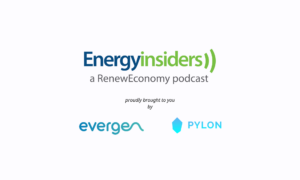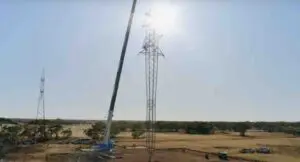South Australia is gearing up to launch a long duration energy storage tender before the end of the year, as the nation’s most renewables powered state seeks to firm up its huge solar and wind resource and replace the fossil gas capacity leaving the system.
The South Australia government on Monday launched a second and final stage of consultation on its proposed Firm Energy Reliability Mechanism (FERM), in a bid to drum up assets offering at least 30 megawatts (MW) of capacity and the ability to “continually dispatch” for at least 8 hours.
The FERM will take a three-pronged approach to meeting a five-year Firm Energy Target (FET), which is yet to be set but which will be crucial to the state’s ability to make the final leap to 100 per cent net renewables by 2027. A 2024 Electricity Development Plan (EDP) indicated 2300 MW of firm capacity would be needed out to 2030.
The two main parts of the proposed FERM include a “notice of intention” process, geared at eligible existing generators, and a tender process for existing, new and long-lead generators.
A third set of transitional and deemed contracts will be “applicable to existing long duration capacity providers through the transitionary period.”
This perhaps takes into account feedback from stage one consultations that eligibility of gas and diesel be reconsidered or progressively phased out to align with the government’s net-zero target.
As things stand, the updated eligibility criteria excludes coal and nuclear as generation sources – but notably not gas or diesel – and any projects that have already won support, or are applying for it, through the federal government’s Capacity Investment Scheme or a similar funding source.
For the tender, bidders cannot be already registered as a generator/integrated resource provider in the NEM at the auction launch date, but must intend to register as a Scheduled Generation Unit or Bi-Directional Resource with AEMO.
The consultation paper says that after the current round of feedback, regulations governing the scheme will be finalised and are proposed to come into play in August 2025, “enabling the first tender to be launched in Q3 2025.”
Once it is finalised, the South Australia scheme will join the New South Wales LTESA mechanism as the only other state-based long duration energy storage target and mechanism, although with a few notable differences.
The Clean Energy Council’s Christiaan Zuur praised the FERM in a post on LinkedIn on Monday, both for its “sweet homophonic acronym development” and for its proposed design.
“This target is the second state based LDES mechanism … with a few differences including structure and tenor for existing assets,” Zuur writes.
“Great to see SA continuing to show the other states just how it’s done!”
One commenter was quick to note, however, that the 8-hour duration requirement could act to exclude anything else but gas and diesel for the first few years of the scheme, as batteries scramble to compete with fossil peakers.
“The ‘F’ should really stand for ‘Fossil’,” the comment says.
But Javier Savolainen, the market development manager at Wärtsilä Energy, says the FERM is “not a concession or step backwards” but crucial to safeguard system security and increase the share of renewable energy in the state.
“With South Australia retiring 950 MW of thermal power plant capacity by 2028, it will face shortfalls in meeting its peak demand of 2,000-3,000 MW during periods when renewables are not available,” Savolainen said in an emailed statement to Renew Economy.
“Flexible engine power plants are ideal for providing firming capacity with high efficiency during renewable droughts. They consume 20-30% less fuel compared to traditional gas power stations and can be used on-demand to maximize the use of renewable energy in the system.
Wärtsilä has a hand in both gas generation and grid-scale battery energy storage in South Australia, including as the supplier of the technology for AGL Energy’s Barker Inlet Power Station and Torrens Island battery, respectively.
The Barket Inlet Power Station, or BIPS, is relatively new, having been switched on in 2019, and relatively flexible, being able to power up in just five minutes. It will likely be a strong participant in non-tender parts of the new mechanism.
South Australia has eight big battery projects currently operating on its grid, with another six – Clements Gap, Hallett, Limestone Coast, Bungama, Solar River and Summerfield – under construction. At least another 20 big battery projects are in the pipeline.
At this stage, however, the only eight-hour batteries in the pipeline for Australia are in NSW, likely thanks to that state’s long duration energy storage target.








